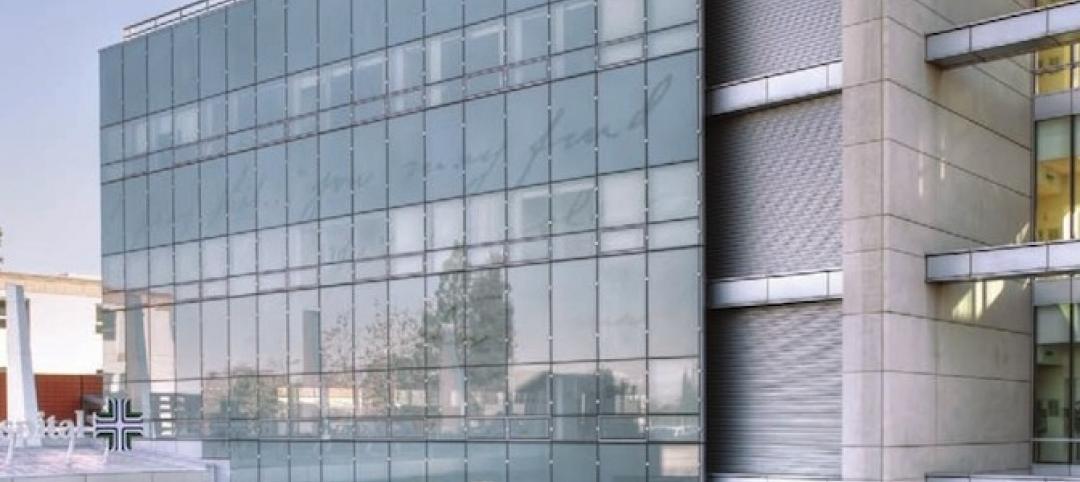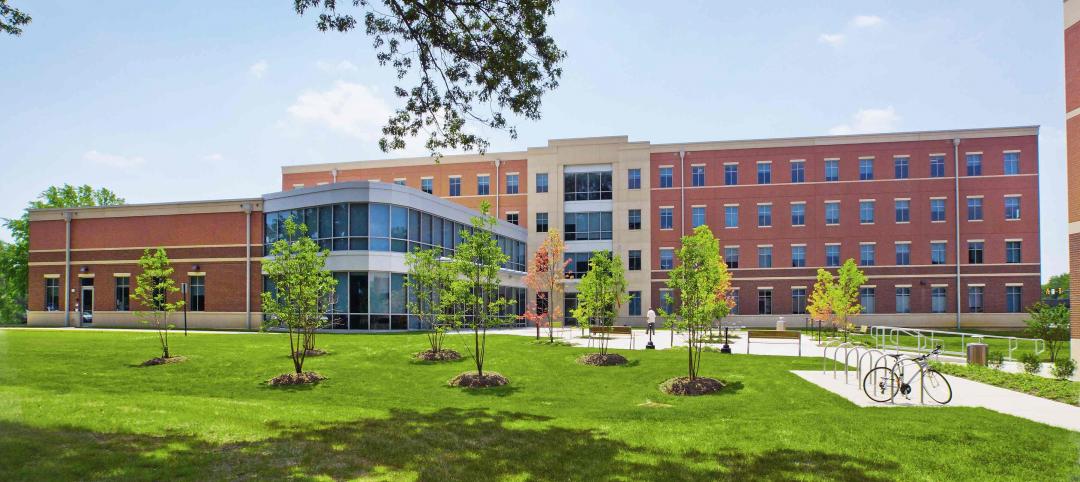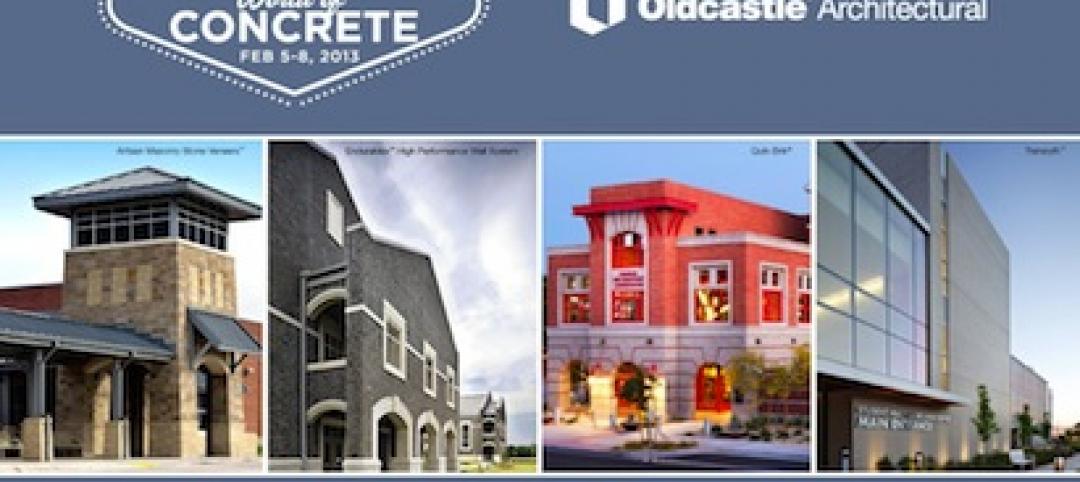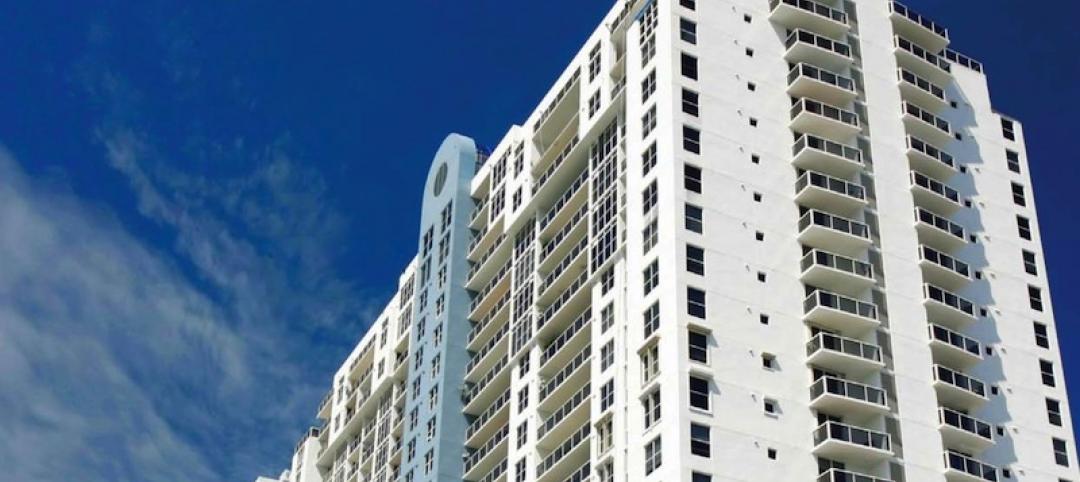 |
Insulated metal panels, or IMPs, have been a popular exterior wall cladding choice for more than 30 years. These sandwich panels are composed of liquid insulating foam, such as polyurethane, injected between two aluminum or steel metal face panels to form a solid, monolithic unit. The result is a lightweight, highly insulated (R-14 to R-30, depending on the thickness of the panel) exterior cladding system that provides a sleek, contemporary design aesthetic for virtually any building type.
In an effort to help AEC professionals work with insulated metal panel systems, BD+C turned to a few experts for tips on specifying and designing with IMPs. Here are seven important tips to keep in mind when working with IMPs for your next project:
1. Make sure the fasteners are compatible with the IMP substrate. Specifying the wrong fastener type can lead to corrosion between dissimilar metal types, says Scott Kriner, president of Green Metal Consulting Inc., Macungie, Pa., and technical director with the Metal Construction Association (MCA), Glenview, Ill. "It's critical that the installer doesn't just grab some screws off a hardware store shelf," he says.
 |
| The high insulation value (R-14 to R-30, depending on the thickness of the panel) of insulated metal panels makes them ideal for freezers and coldstorage buildings, such as the Land O Frost cold-storage building in Madisonville, Ky., which is clad with IMPs in various thicknesses from Kingspan. |
For example, galvanized steel fasteners—a common fastener type—are not compatible with aluminum panels. Only aluminum and 300 series stainless steel fasteners are compatible with aluminum panels, according to the MCA.
Corrosion can result in potential risk to the integrity, performance, and aesthetics of the IMP system. To prevent dissimilar metal corrosion at the connection point, fasteners should be made of the same material as the wall systems whenever possible. At the very least, the fastener should display equivalent corrosion resistance to the material being fastened into, according to MCA's Technical Bulletin "Compatibility of Fasteners with Metal Roof and Wall Panels." The bulletin includes a helpful fastener/panel compatibility guide (www.metalconstruction.org/pubs).
2. Specify IMP color early in the design process. Color options may be limited for IMP projects located in extremely hot or cold climates. Due to the insulated nature of the panels, the temperature differential between the face and the liner side of the panel can be substantial enough to cause stress within the panel. This situation is exacerbated when certain colors are specified in extreme climates, says Rick Brow, director of marketing with CENTRIA. He recommends that AEC professionals verify potential color limitations with the IMP supplier early in the design process.
"For instance, during the erection of a panel on a sunny winter day, a dark-color panel face sheet may expand while the cold liner side of the panel, which is insulted from the face, will not," says Brow. This can cause the panel to bow. Forcing the panel to remain flat by fastening at supports may overstress the panel. In this case, shortening the total length of the panels will prevent bowing.
3. Avoid support systems that span from the top of slab to the underside of slab. This type of approach, which is typical of many stud support systems, may transfer inter-story movement into the panel joint, which can result in crushed panels, broken seals, and failed panel connections, according to Brow. Special detailing from the IMP manufacturer is required to accommodate this type of support system.
4. Follow the manufacturer's guidelines for joinery between panels. IMPs are a highly engineered wall or roof system that functions as an air barrier, water barrier, and thermal insulator. Joinery detailing and installation are of utmost importance to ensure the panels form a solid air/water/thermal barrier. Kriner advises AEC professionals to consult with the individual manufacturer on proper joint detailing procedures.
"While most IMP manufacturers employ a tongue-and-groove joint approach using a concealed fastener clip system, the difference between systems gets pretty intricate when you start talking about the sealants, fasteners, gaskets—all the techniques used to close the joints," says Kriner. "Manufacturers have very specific, and, in some cases, proprietary fastening techniques that are used to form a solid barrier with thermal performance and barrier protection."
5. Get the panel alignment just right. "Since insulated metal panels rely on liner seal technology, proper girt steel alignment is imperative to assure the weather integrity of the system," says CENTRIA's Brow. Misaligned panels may also lead to structural issues. Brow says panel supports should be properly aligned and designed to support the loads transferred at the insulated metal panel fastening points.
6. Account for panel movement. Compared to concrete or masonry cladding elements, metal panel systems have higher coefficients of expansion for thermal movement, according to James N. Chiropolos, RA, associate principal with Wiss, Janney, Elstner Associates, Northbrook, Ill., and author of Building Envelope Design Guide — Panelized Metal Wall Systems (www.wbdg.org/design/env_wall_panelizedmetal.php).
Chiropolos says designers of metal panel systems need to calculate the expected movement of the panels due to changes of temperature. Joints between panels must be wide enough to accommodate thermal expansion and differential movements between panels. Joint sizes can vary from a quarter-inch wide for small panels to one inch wide for larger panels. Factors that influence joint size include panel size, panel location on the building, and tolerance issues.
7. Sealant installation is crucial to barrier integrity. Sealant must be installed with proper marriage beads to maintain consistent air and moisture barriers at the liner side of the panel. "One critical seal that must be done properly is the marriage bead that ties the sealant at the panel end joint to the panel liner side seal," says Brow.
Related Stories
| May 17, 2013
5 things AEC pros need to know about low-e glass
Low-emissivity glasses are critical to making today’s buildings brighter, more energy-efficient, and more sustainable. Here are five tips to help AEC professionals understand the differences among low-e glasses and their impact on building performance.
| May 14, 2013
Easy net-zero energy buildings [infographic]
"Be a Zero Hero" infographic educates building industry professionals on ultra energy-efficient structural insulated panel construction
| May 8, 2013
Preventable curtain wall failures - AIA/CES course
In many cases, curtain wall failures are caused by fairly simple errors that occur during the fabrication and installation process. This presentation will highlight common errors and when they typically occur.
| Apr 16, 2013
5 projects that profited from insulated metal panels
From an orchid-shaped visitor center to California’s largest public works project, each of these projects benefited from IMP technology.
| Apr 10, 2013
23 things you need to know about charter schools
Charter schools are growing like Topsy. But don’t jump on board unless you know what you’re getting into.
| Apr 8, 2013
Oldcastle Architectural acquires Expocrete Concrete Products
Oldcastle® Architectural has acquired Expocrete Concrete Products Ltd., giving North America’s largest producer of concrete masonry and hardscape products an increased presence in the high-growth region of western Canada.
| Apr 3, 2013
AIA CES class: Sealant repairs that last – hybrid sealants for building restoration
It is hard to talk about restoration without talking about sustainability. This two-hour interactive online course discusses the role that restoration can and does play in the arena of sustainability, and specifically the role that sealants play in sustainable design and repair.
| Mar 29, 2013
Stanford researchers develop nanophotonic panel that reflects sun's heat out of the atmosphere
Researchers at Stanford University have developed a nanophotonic material that not only reflects sunlight, but actually beams the thermal energy out of the earth's atmosphere.















